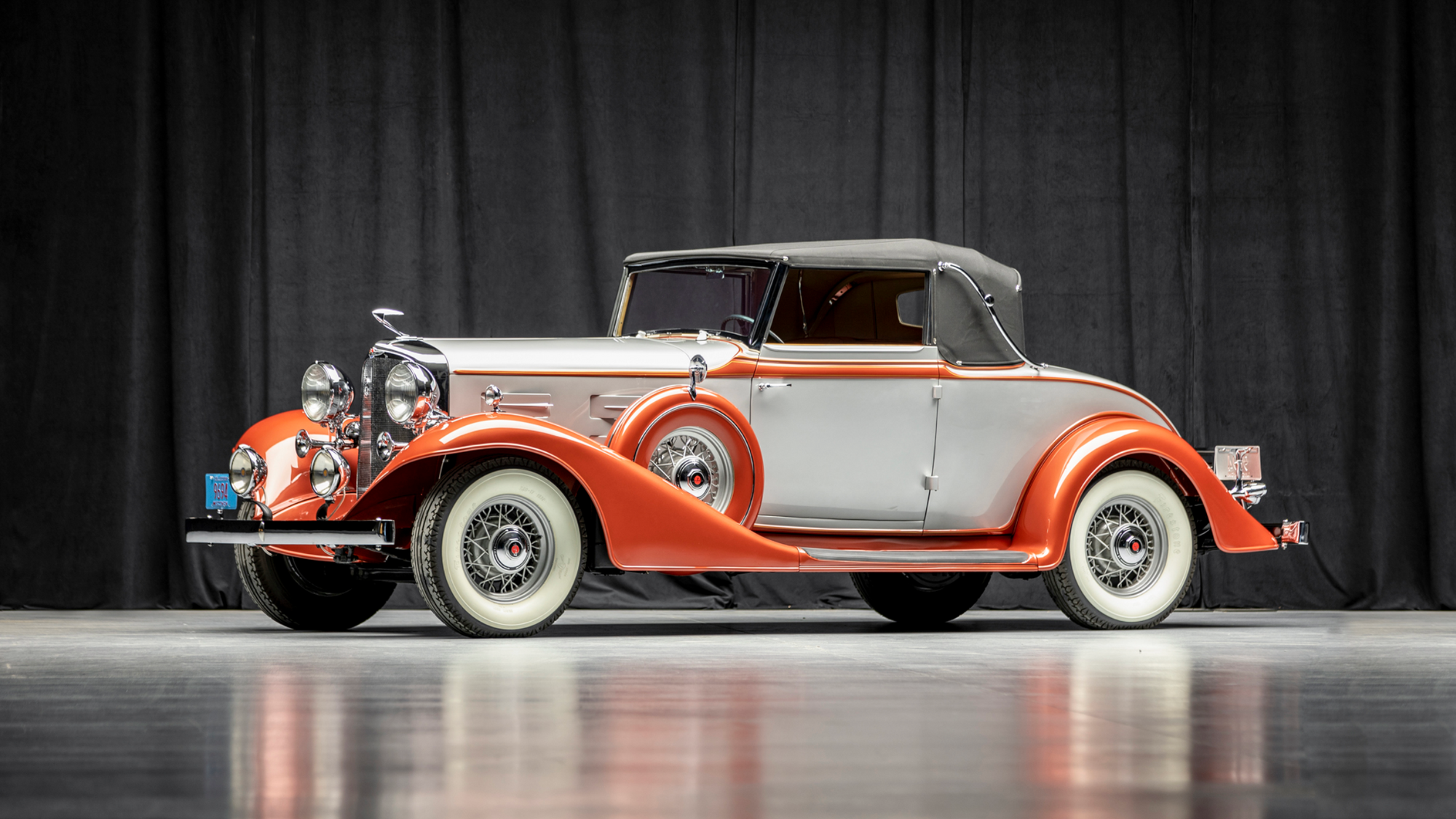While designing the new La Salle, Harley Earl thought of the European automotive industry, where style dominated the functionality. Earl didn’t conceal that his main inspiration was the Spanish Hispano-Suiza. And as a tribute to the brand, Earl placed the golden letters LaSalle on the car’s radiator, as it was with the Hispano-Suiza.
Source: RM Sotheby’s
LaSalle was a classic example of how a new brand emerges to wrestle with a competitor. Yes, Pontiac’s instant success spurred the creation of a brand with a French name. LaSalle was the firstborn of Cadillac’s new line designed for bright youth. It came out with an 8-cylinder 5-liter new engine, 75 hp, which accelerated to 113 km/h. In terms of style, this sedan (and soon a roadster and a dozen more body options) stood out only in several Cadillacs, but it was the first of them to be noted at the Indianapolis 500 races. It was one of the first automobiles with new quick-drying enamels from DuPont. It was this vehicle that got the status of a corporate-style car.

Source: Motorious
XX century. The Roaring 20s. After the First World War, the Americans amassed a lot of capital that had to be spent. The whole class of super-wealthy people emerged and the American luxury automaker did not know about hardships for a long time. Cadillac won the segment for the typical rich Americans, beating such magnificent rivals as Isotta-Fraschini, Duesenberg, and even Rolls-Royce. However, the proper rival arose in the domestic market: Packard became the number one luxury automobile manufacturer in the mid-twenties, surpassing the brand. It was intended for those who grew out of Oldsmobiles and could afford something more than a “Buick”. As a result, “Caddy”, which was the rich Americans darling, began to surrender quickly. It was then the LaSalle brand with a French name emerged as “European” things were considered stylish and trendy in the US. This new “baby Caddy” was entrusted to the young designer Harley Earl, who arrived from Hollywood. GM’s top manager Larry Fisher, who was originally from the Fisher family of bodybuilders, found Earl at a car dealer he knew – Don Lee, for whom the young Earl made bodies. Harley’s professional path at the company was long, even though he was hired for a couple of months: Earl served in Detroit for thirty years, changing not only the luxury brand but all of the American automotive industry. In 1927 Earl’s new model became the founder of American automotive design. The young and talented designer started a whole era in the history of automotive design. The model was highly inspired by then-popular Hispano-Suiza, and Earl was proud of this fact. High and narrow grille, large headlights, and vents on the sides of the hood were the vivid similarities between European and American automobiles. However, the Ear’s automobile turned out so beautiful that in 1928 its style was transferred to the Cadillac’s production model.
Source: Mecum Auctions
During the Great Depression, LaSalles were almost indistinguishable from Cadillacs and simply provided the company with additional sales. But in 1933, the market changed dramatically, and the model had to return to the original middle vehicle class, or disappear. The company chose the first option and completely redesigned the automobile. The new shortened frame with a 119″ wheelbase, received X-beams, coil-spring independent front suspension, and Bendix hydraulic brakes on all wheels using a single-disk dry clutch with a synchronized 3-speed gearbox. The updated model again took the forefront of American automotive design. A high and thin V-shaped grille, streamlined fenders, teardrop-shaped headlights, a low windshield, a “turret top” roof with rounded side windows, round vents on the sides of the hood, and twin blade-shaped bumpers created an impressive image. In 1933, only a 2-seat coupe, two 4-door 5-seat sedans, and a convertible with an optional jump seat body style were offered, all made by Fleetwood company. The price was $1695 regardless of the bodywork – $1000 less than the 8-cylinder Cadillac. In 1933, sales of LaSalle increased to 7218 cars, but this did not justify the expectations. Nevertheless, LaSalle for the second time after 1927 became the pace car of the Indianapolis 500 race.
Source: FavCars
In 1933, by a tragic coincidence, A.J. Miller, specializing in the construction of hearses, turned to the LaSalle brand. Miller was building ritual carriages based on Studebaker, Nash, and Packard, and included this model in its catalog in 1933. So, balancing on the verge of life and death due to the economic decline, LaSalle was taking on the last journey of those who did not survive this same crisis.
Contact us if you have this or another classic car to sell.